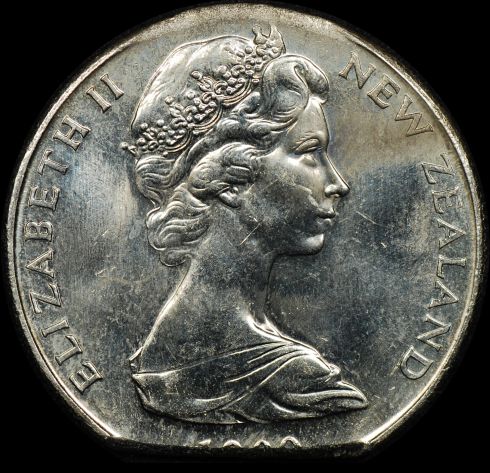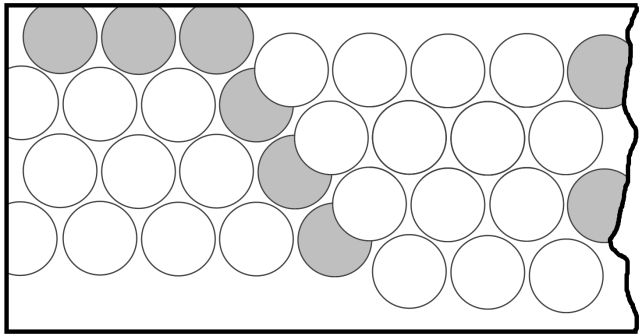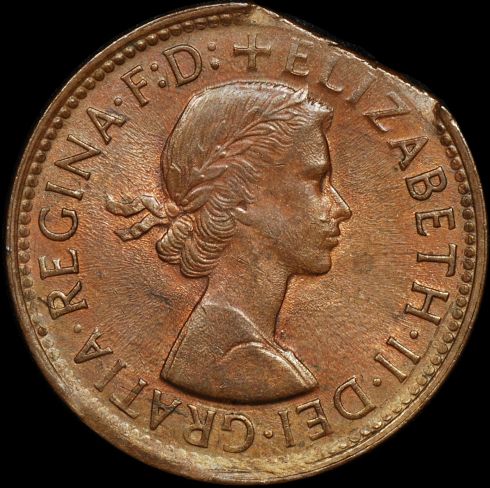June 2012 Archives

2012 Mini Gold Fifty Cent
This 50 cent coin is a tiny 11.15mm in diameter and, in pure 99.99% gold is valued at $25 (bullion value at time of writing calculated by the Gold Calculator). Whilst this coin is a special non-standard (NCLT) release and quite a novelty there aren't many fifty cents that mirror it's value.
There have been many many 50c issued into circulation and into the collector market.
Typically those commemorative circulation 50c stashed in a jar or drawer by the everyday collector who finds a nice new shiny or interesting commemorative 50 cent piece in their change will be disappointed by their true value. Mostly these coins are really only worth their face value of 50c.
But.....and there's one but. Fifty cents that are round were only minted in 1966 are actually 80% silver. Don't confuse these with the Endeavour ship design of New Zealand round 50c as these don't contain any silver. The Australian round 50c is usually worth around $10 but is dependent on the silver bullion price, today being AU$29.73 (US$19.75)* but they usually command a small premium above this.
*thanks to the magical blog pixies (tricky html coding) this value is updated every day!

Mini Mob of Roos One Dollar
A must have on my shopping list of this years Royal Australian Mint coin releases was the newly issued Mini Money Circulating Designs set. A tiny gold mob of roos dollar coin reeled this dollar collector into a $590 purchase I probably shouldn't have made. The set features 8 coins all the standard circulating designs by Stuart Devlin from the 5c echidna to the $2 aboriginal design (by Horst Hahne). Interestingly it adds a round Coat of Arms 50c and the 1c and 2c now removed from circulation.
All 8 coins are the same size with a diameter of 11.15mm released in 99.99% pure gold. Struck in proof quality each coin is housed in a capsule with a foam surround. If it weren't for this surround the coins would be lost in the large velvet lined wooden case. I was pleased when I saw how this set was presented as I had envisaged that the foam surround would stop the coins from moving inside the capsule which is often a problem with coins housed this way (eg. Wedding Sets), this movement can cause damage to the coin. I was however mistaken as these coins move forward and backwards in their capsules which is not ideal.
These sets have been issued with a limited mintage of 2,000. Each of the 8 coins weigh .5g which makes a total gold amount of 4g included in this set. At today's gold price at the current exchange rate (according to the Gold Calculator) there is $204.21 worth of gold for issue price of $590. Interestingly this set was originally priced at $550 for those who opted into the Collection by Selection pre-order offered for the first time this year by the RAM.
Producing such tiny coins must have been a huge task for the RAM not having struck coins of this size before. The images provided here are taken with the coins as issued in their capsules. Ideally removing the coins from their capsules would have provided better photographs. Obviously the reverse is better presented than the Queen's portrait side with the obverse falling victim to the manufacturing process of the foam insert depicting ragged edges. You can also see scratching on the capsule surface as the coin sits back deep in the capsule when viewing the obverse..

Gold Mini Circulating Money Coins
This article appeared in June 2012 Australasian Coin and Banknote Magazine written by the team at the Australian Coin Collecting Blog and is reproduced here for your viewing pleasure.

Figure 2: New Zealand 50c straight clip error with strong Blakesley Effect.
One of the most common Australian pre-decimal errors that you'll find is the clipped planchet error. Also known as the incomplete planchet error, these coins are the product of a problem with the coin blank manufacturing process. During this process coin blanks are manufactured by a press known as a blanking press. A strip of metal is fed through the blanking press at high speed and the press utilises a gang of punches to strike the coin blanks out of the metal strip. The resultant products are of course the coin blanks and a length of metal strip (known as scissel) with holes punched out of it. The scissel is then re-melted to be rolled again to be fed through the blanking presses.
In an ideal world the striking rate of the blanking press matches the feed speed of the metal strip perfectly and one set of coin blanks is struck immediately after the last set so that the number of blanks produced is maximised. However, due to feed problems or speed variations sometimes a set of blanks is punched out before the holes from the preceding set has fully passed. The result of this is blanks being created with some metal missing. These blanks go on to be struck and are recognised as curved clipped planchet errors. In some other cases the metal strip can vary unexpectedly in width or blanks are punched from the very end of the strip of metal. This can result in other incomplete blanks that are known as straight or ragged edged clipped planchet errors. They are also sometimes called "end of bar" errors. Figure 1 illustrates how incomplete coin blanks might be formed from the metal strip with the incomplete blanks shaded grey. There are some other types of clipped planchet errors but these will be covered in a subsequent article.

Figure 1: How incomplete blanks might be formed.
Diagnostics of Genuine Clipped Planchet Errors
It's not unusual for fake clipped planchet errors to be passed off as the real item and it's important to understand the characteristics of a genuine clipped planchet error. There are a number of diagnostics you can look for to determine a clipped planchet error is genuine and those will now be covered.
The Blakesley Effect
Named after the American numismatist that first identified it, the Blakesley Effect can be the most powerful identifier of a genuine clipped planchet error. The effect is characterised by rim weakness directly opposite the missing portion of a clipped planchet error coin. This effect is a result of the rimming process that is used on most coin blanks to form a coin planchet. The rimming process rolls the coin blank along its edge under high pressure between a roller and a fixed edge, as it is rolled around the full circumference the edge is raised. When an incomplete blank rolls around this edging press the pressure is relieved when the missing portion contacts either the fixed edge or the rimming roller. The result is that no rim is formed opposite the missing portion of the coin blank.
When an incomplete coin planchet is struck the missing raised rim opposite the clipped region is typically very weakly struck simply because the rim is not raised. An excellent example of the Blakesley Effect is shown in Figure 2. It is important to realise that the Blakesley Effect will only be seen on coins that have been through the coin rimming process.

Figure 3: Fishtailing of USTR
Fishtailing and Radial Metal Flow
As a coin planchet is struck the metal flow will take the path of least resistance which normally is to fill the design elements of the coin dies. However, in the case of a clipped planchet the metal around the missing region will tend to flow outwards (or radially) towards the missing region. This is because the metal in this area is not restrained by the collar die. This radial metal flow shows itself in a couple of different ways. The first is fishtailing of the radial design elements (usually the legends) around the missing portion of the planchet. The second is rounding of the struck coin rim next to the missing portion of the planchet. Figure 3 shows a portion of a clipped Australian half penny with clear fishtailing of the letters USTR while Figure 4 exhibits clear rounding of the rim near the clipped portion of a 1964 penny.

Figure 4: Rounded rim edge
Strike Weakness
Because of the radial metal flow described above there is less metal to fill the die design elements around the missing part of the coin planchet. A genuine clipped planchet tends to have a weaker strike immediately around the missing part of the coin. Strike weakness due to a genuine clipped planchet error can be seen in Figure 5.

Figure 5:Strike weakness of + ELIZ
Conclusions
When the diagnostics of a genuine clipped planchet error coin are realised and understood it's a fairly simple matter to determine if a coin is a genuine or manufactured "error". Once one has enough practice it's even possible to recognise genuine errors from poor images on the internet. If you are an error collector it's an important set of skills to have in your "kit bag" and can prevent you from making mistakes, even when purchasing the most humble of error coins, the clipped planchet error.
References:
Jon Saxton, "The 'clipped planchet' error" (2004) Retrieved April 21, 2012 from http://www.triton.vg/clip.html
"How to Determine a Genuine Clipped Coin Error" (2009) Retrieved April 22, 2012 from https://www.australian-coins.com/blog/2009/09/how-to-determine-a-genuine-clipped-coin-error.html
Herbert, Alan (2002) "Official Price Guide to Mint Errors", 6th Edition", New York, House of Collectibles
If you're after a pretty penny, superb sixpence or a flawless florin then look no further than the latest Pacific Rim Online Auction.
Pacific Rim is back into the online auction scene after previously running Coinline Auctions which wrapped up a few years ago. Pacific Rim Coins is a well known numismatic business trading since 1987 under the leadership of Chris Buesnell. Chris was one of the pioneers in bringing PCGS into popularity in Australia. The business has also recently taken over the Monetarium Sydney premises in Kogarah and is a member of ANDA and are a PCGS registered dealer.
Now into it's third online auction, Pacific Rim Online Auctions is another avenue for collectors to find that quality new piece for their collections. You'll find a lot of the items up for auction are graded and slabbed by one of the top third party grading services, PCGS. This certainly gives the online buyer piece of mind when making that, sometimes tricky purchase over the internet.
The latest monthly auction, Number 3, is a real treat for collectors and a quick browse of the lots will have Australian pre-decimal collectors quivering in their boots. We'll go so far as to say the items offered equate to the most extensive complete pre-decimal coin collection that has been offered for sale and the majority of the coins are graded and slabbed by PCGS. Many earlier coins are top of the populations so it's quite likely some coins of this scarcity and rarity simply will not be seen again.
Keep en eye out each month for new and exciting auctions.




